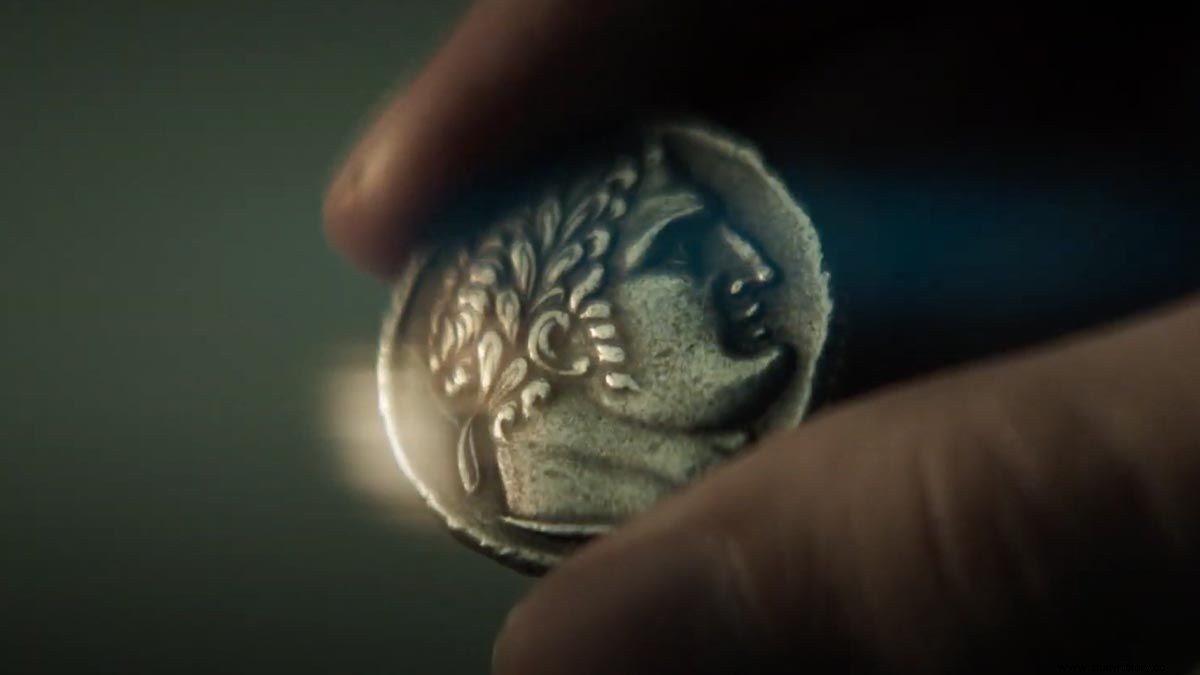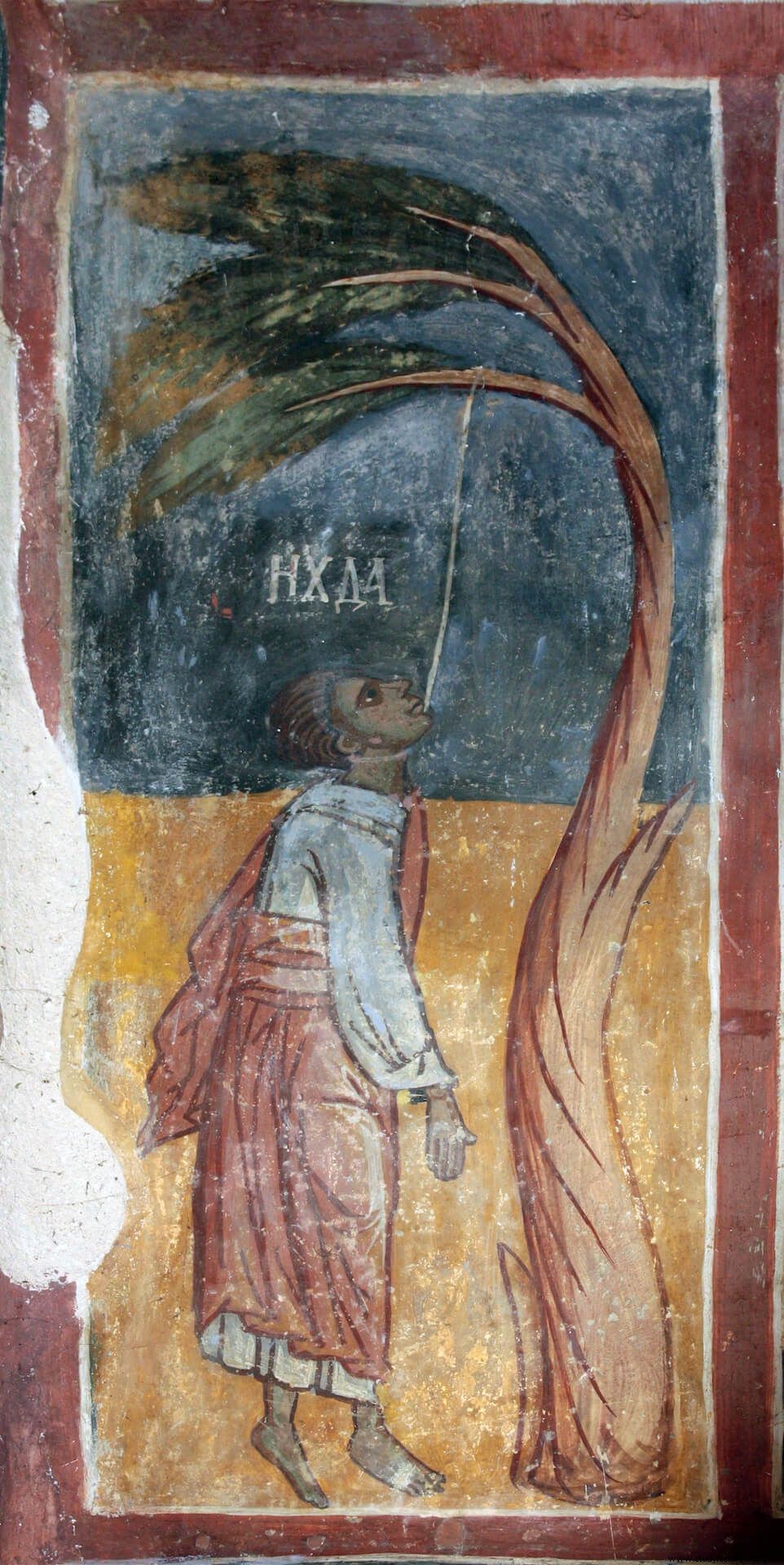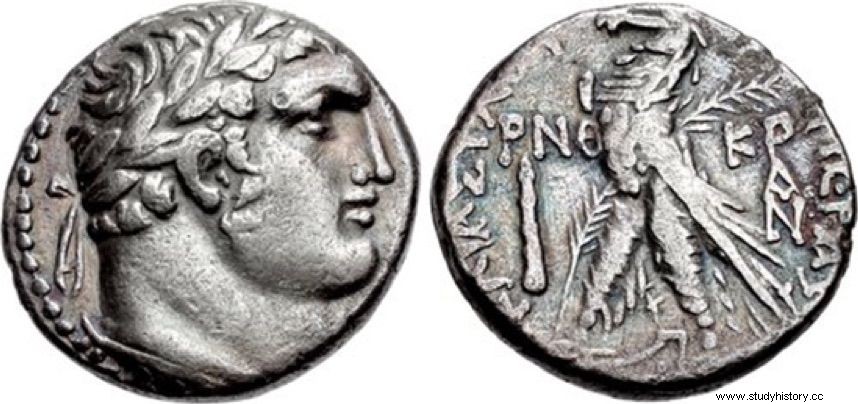
30 coins , the HBO series directed by Álex de la Iglesia, places us in the town of Pedraza (Segovia), where one of these coins appears that signified the betrayal and death of Christ. According to the passage mentioned above, Judas Iscariot , a disciple of Jesus, agreed with the Sanhedrin to betray and deliver his teacher in exchange for said coins. However, there are several issues that raise doubts about this passage from the Gospel of Saint Matthew.
Why thirty?
First of all, the quantity of the pieces. Although the number of coins that were given to Judas is well known, in reality it is not the only time in the Bible that a payment of a similar amount is mentioned, which has led scholars to suspect that in reality those 30 coins they are a recurring archetype in biblical mythology . Two examples mention a transfer of the same amount. First, Exodus 21:28-32 specifies the steps to be taken if an ox goes mad and kills a man, woman, child, or slave, and a few specific circumstances in which they have been taken. could cause these deaths. However, the punishment that will be imposed on the owner of the ox is also mentioned if the animal, instead of killing a free person, gores and murders a male or female slave. That punishment is effectively repaying the owner of the unfortunate servant with 30 silver coins.
Another instance in which a figure similar to the one that led Judas to betray Jesus is mentioned is in Zechariah 11:11-12. In this passage, the prophet Zechariah receives a salary of thirty pieces of silver for his work, to which he sarcastically gives the category of generous, and Yahweh orders him to throw them at "the potter" if he does not want them. . This reference to the "potter" is more important than it seems. When Judas, wracked with guilt, tried to return the coins to the priests and they refused, the former disciple threw the pieces into the treasury of the Jerusalem Temple and soon after committed suicide by hanging (Matthew 27:5). The priests, then, decided not to leave those coins in the Temple since they were stained with blood and to use them to buy a piece of land, precisely called the Potter's field (Matthew 27:7), to build a cemetery for pilgrims, for the foreigners who came to the city. Matthew then mentions:
In this passage, Matthew refers to the purchase of a field by the prophet Jeremiah, although the reformer Calvin argued as early as the 16th century that Matthew was actually wrong or was he actually referring to Zacharias [1] (for the reference to the thirty coins). That is to say, the exact payment of thirty coins that Matthew mentions would be a way of fulfilling the prophecy made by Jeremiah or Zechariah and thus taking root with the Old Testament, and not so much the description of a historical amount given to Judas.

On the other hand, we can also take into account another aspect, and it is the very way in which the Semitic peoples conceived the number thirty . The Sumerians, a civilization long before the time of Jesus, based their numerical system on 60, it was a sexagesimal system. Thirty was therefore half of this whole number, something that had no value. This conception of the number thirty transferred to the Sumerian culture and permeated all the others of the Near East [2] , including the Israelite, something that can be seen very well in the fact that the price of a dead slave is thirty pieces of silver or that Zacharias despises a salary of the same value. Therefore, the amount that Matthew mentions of thirty coins given to Judas would actually be a way for the priests of the Temple to show contempt both for Jesus, whom they considered a fraud, and for Judas, whom they saw as a miserable traitor, although We could also appreciate another vision, which is what the prophet Isaiah would give us when he describes the future Messiah:
That is, it is likely that Mateo was aware of the low value that the 30 silver coins had in the collective imagination and wanted to emphasize it, that Christ he sacrificed himself for humanity in exchange for a derisory amount of money.
In what currency was Judas paid?
Another of the most debated aspects about the Matthew passage has been to clarify what kind of coins Judas received for the betrayal. The first thing we must bear in mind is that the great variety of coins attested in Judea at that time makes it difficult to discern their exact origin. Judea, before becoming a Roman province in AD 6. C, had been under the control of the Persians, Alexander the Great, Ptolemaic Egypt and the Seleucids. During each stage, every time the ruling elites changed, new currencies were introduced, so it is difficult to find out the exact currencies used as payment [3] .
However, scholars have put forward two possible hypotheses. The first is that they could have been Greek staters . Staters were the most valuable coin mentioned in the New Testament. They were originally minted in gold and later in silver by Philip II and Alexander the Great, and continued to be in circulation long after their deaths. In this sense, it is worth highlighting a passage from Matthew (17:27) in which it is recorded how Peter found, in the mouth of a fish, a coin that would be a stater, which he would use to pay the annual tax to the Temple of Jerusalem. Therefore, some authors have deduced that the thirty coins could have been staters [4] .
However, the second theory is the most likely and posits that the coins were actually Tyre shekels . It is a coin that, although it is not mentioned due to its original geographical location in the New Testament, is known to have been the most popular among the Jews. The interesting thing about this coin is its high silver content, around 97% [5] , which is why it became the currency used to pay the annual Jerusalem Temple tax [6] , and that every Jewish male over the age of 20 had to pay[7]. Bearing in mind that Judas received thirty pieces of silver from the priests, it would most likely be thought that, precisely because of its high silver content and because it was the coin used to pay the aforementioned tax, Judas received shekels.

Shekels were minted in various cities, such as Tire , Antioch, Gaza or Ashkelon. However, it was the Phoenician city of Tire that produced most of the silver coins. The shekel, introduced during the Seleucid period, underwent a transformation at the death of Demetrius II. From then on, the reverse of the silver coins issued in Tire replaced the representation of the Seleucid monarch with that of the Phoenician deity Melqart [8] .
And it is precisely the shekel of Tire the coin chosen by the creators of the series 30 coins . Throughout it we see several times the obverse of the coin, in which the aforementioned Phoenician demigod appears. On the reverse, which is barely shown, the traditional eagle that we find in the shekels of Tire is represented.
On the other hand, it should be mentioned that, since each shekel was equivalent to four denarii, Judas, by receiving thirty coins, would have obtained four months' salary [9], the same amount that was given in compensation when someone died accidentally [10] , something that would not go very well with the desire of the priests of the Temple to show contempt for Judas or for Jesus.
Have the coins of betrayal been preserved?
Several places claimed to have some of the 30 Judas coins in their possession. Apparently, in our country two coins would have been found. One of them would have been cast in Velilla del Ebro (Zaragoza). The other would have been taken, in 1788 and under the orders of Cardinal Lorenzana, from Puebla de Montalbán to the cathedral of Toledo. Together with Spain, Germany, Brazil, Colombia, France, Italy, Peru, Portugal and Venezuela they also maintain that they have some of these currencies. More striking is the case of the Cathedral of Zacatecas, in Mexico, which claims to have in its possession no less than seven coins [11] .
However, taking into account the difficulty of knowing if there were thirty exact coins, something that, as we saw at the beginning of the article, has already raised doubts, it seems unlikely accept that there is someone who can claim to know where these pieces could be found today... And going back to Calvino, who in his Treatise on relics He affirmed that "If we wanted to collect everything that has been found [of the cross of Christ], there would be enough to load a large ship", if we gathered all the coins of Judas, perhaps he could have bought a kingdom, even if it was from this world.
Bibliography
- Aguilera Romojaro, Mª. J. (2014):“Historical source of the gospels:the passages where coins are mentioned”, Historical research notebooks , No. 31, p. 173-222.
- Debloois, N. (1996-97):“Coins in the New Testament”, Brigham Young University Studies , vol. 36, no. 3, p. 239-251.
- Halverson, T.:The Surprising Meaning of 30 Pieces of Silver in the Bible , available online at https://www.ldsliving.com/The-Surprising-Meaning-of-30-Pieces-of-Silver-in-the-Bible/s/90995
- Jacobson, D. M. (2014):“Herodian bronze and Tyrion silver coinage”, Zeitschrift des Deutschen Palastina-Vereius , vol. 130, nº2, pp. 138-154.
- Vidal, J. M. (2002):“A coin of Judas, in Toledo”, El Mundo , September 8, 2002, retrieved from:https://www.elmundo.es/cronica/2002/360/1031560518.html
Notes
[1] https://www.ccel.org/ccel/calvin/calcom33.ii.xxxvi.html
[2] https://www.ldsliving.com/The-Surprising-Meaning-of-30-Pieces-of-Silver-in-the-Bible/s/90995
[3] Nanci DeBloois, “Coins in the New Testament”, Brigham Young University Studies , vol. 36, no. 3 (1996-97), 239.
[4] DeBloois, “Coins in…”, 242.
[5] David M. Jacobson, “Herodian bronze and Tyrion silver coinage”, Zeitschrift des Deutschen Palastina-Vereius , vol. 130, nº2 (2014), 146.
[6] Jacobson, “Herodian bronze…”, 147.
[7] Mª Jesús Aguilera Romojaro “Historical source of the gospels:the passages where coins are mentioned” Historical research notebooks , nº31 (2014), 179.
[8] Jacobson, “Herodian bronze…”, 146.
[9] Aguilera Romojaro, “Historical source…”, 184.
[10] DeBloois, “Coins in…”, 244.
[11] José Manuel Vidal, "A coin of Judas, in Toledo" retrieved from https://www.elmundo.es/cronica/2002/360/1031560518.html
